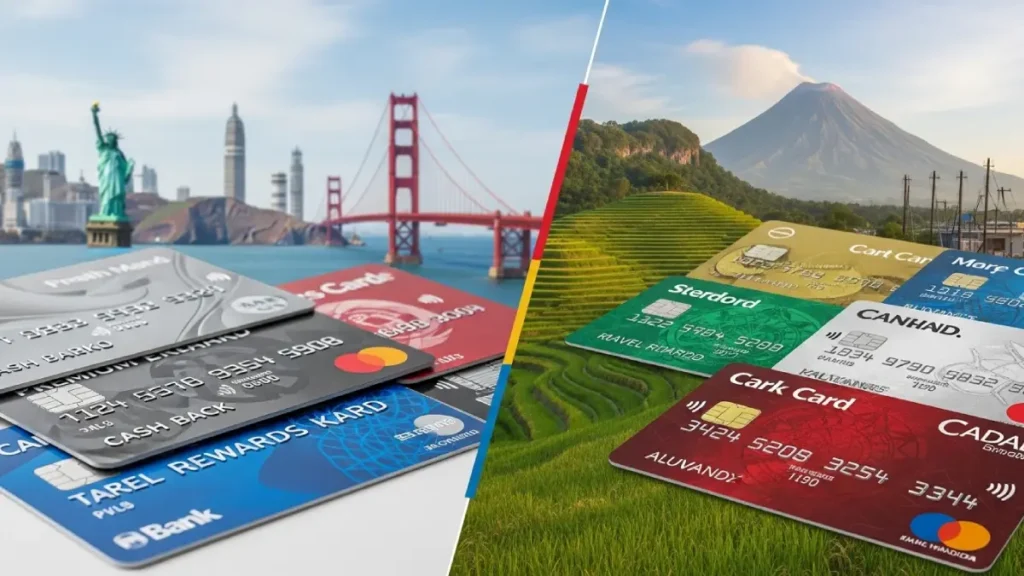Best Credit Cards: Maximize Rewards, Minimize Fees
Finding the best credit cards for your financial situation can significantly impact your budget, rewards potential, and overall financial health.
With countless options available, comparing credit cards based on rewards programs, annual fees, APR rates, and welcome bonuses is essential for making the right choice.
The perfect card can help you save money, earn valuable rewards, or even help build your credit score over time.
Key Takeaways
- Understand the importance of comparing best credit cards based on rewards, fees, and APRs.
- Explore different types of credit cards including cashback, travel rewards, and 0% APR options.
- Learn strategies to maximize welcome bonuses and build/rebuild your credit effectively.
Whether you’re looking for cash back on everyday purchases or premium travel perks, understanding the available options will help you make an informed decision.
If you’re a new driver, understanding car coverage is also essential for financial health, you can check out our tips on securing affordable new driver insurance.

Comprehensive Comparison of Best Credit Cards (Updated Monthly)
| Card Type | Example Card | Regular APR | Annual Fee | Welcome Bonus | Rewards Structure |
|---|---|---|---|---|---|
| Cashback | Wells Fargo Active Cash® Card Learn more | 20.24–29.99% Variable | $0 | $200 after $1,000 spend in 3 months | Unlimited 2% cashback on purchases |
| Travel Rewards | Capital One Venture Rewards Learn more | 19.99–29.24% Variable | $95 | 75,000 miles after $4,000 in 3 months | 2× on everything, 5× on Capital One Travel |
| 0% APR | BankAmericard® Credit Card Learn more | 16.24–26.24% Variable | $0 | None | 0% intro APR for 18 billing cycles |
| Balance Transfer | Citi Simplicity® Card Learn more | 19.24–29.99% Variable | $0 | None | 0% intro APR for 21 months on balance transfers |
| Premium | Amex Platinum Card® Learn more | 21.24–29.24% Variable | $695 | 80,000 points after $8,000 in 6 months | 5× on airfare/hotels via Amex Travel; luxury perks |
Best Cashback Credit Cards
Cashback credit cards offer straightforward rewards that put money back in your wallet with every purchase. These cards are perfect for everyday spending and typically don’t require complex redemption strategies.
The Wells Fargo Active Cash® Card stands out with its unlimited 2% cash back on all purchases, making it ideal for simplicity-focused cardholders. This could be a great tool for your financial planning. To learn some key strategies for growth in other areas of your life, check this out.
For specific categories, consider these options:
- Best cards for groceries: The Blue Cash Preferred® Card from American Express offers 6% cash back at U.S. supermarkets (up to $6,000 per year)
- Best cards for gas: The Citi Custom Cash℠ Card provides 5% cash back on your top spending category each billing cycle (including gas stations)
Many cashback cards feature rotating bonus categories that can earn up to 5% back in specific spending areas each quarter, maximizing your rewards potential.
“Evaluate cashback cards based on your spending habits to find the one that delivers the most value in your top spending categories.”
Best Travel Rewards Credit Cards
Travel rewards credit cards are ideal for frequent travelers looking to earn miles, points, and valuable travel perks. Premium credit cards in this category often include benefits like airport lounge access, travel credits, and elite status with hotel chains.
Thinking about your next adventure? Discover some extraordinary journeys you deserve to experience.
The Capital One Venture Rewards card offers flexibility with 2x miles on all purchases and straightforward redemption options. For luxury travelers, The Chase Sapphire Reserve provides premium benefits including Priority Pass lounge access, $300 annual travel credit, and enhanced point values when booking through Chase Travel.
Key benefits of top travel cards include:
- Transferable points to airline and hotel partners
- No foreign transaction fees
- Trip cancellation/interruption insurance
- Car rental insurance
- Global Entry/TSA PreCheck credits
These cards typically deliver the most value when points are transferred to travel partners rather than redeemed for cash back.
No Annual Fee Credit Cards
No annual fee credit cards are perfect entry points for beginners or budget-conscious consumers who want rewards without yearly costs.
-

 Best Picks10 months ago
Best Picks10 months agoDriving Insurance: Get the Best Car Coverage Without Overpaying
-

 Best Rewards3 months ago
Best Rewards3 months agoBest rewards credit cards in 2025 for everyday use
-

 Personal Growth & Mindset1 year ago
Personal Growth & Mindset1 year agoTed Lasso Effect: 5 Goal-Setting Secrets You Must Know
-

 Career & Success1 year ago
Career & Success1 year ago30 Key Strategies for Growth: Mindset, Productivity & Wellness
-

 Personal Growth & Mindset1 year ago
Personal Growth & Mindset1 year agoMachado de Assis: This Viral TikTok Explains Why You Need to Read ‘The Posthumous Memoirs of Brás Cubas’ Now
-

 Career & Success12 months ago
Career & Success12 months agoChallenges of Not Having Goals: 5 tips to help you get started








